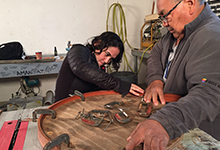
Episode 1: Drum
David Serkoak, a long time drum dancer and drum maker to explain the process of making both a traditional and modern drum as well as teaching the maintenance involved. He also shares the history of the qilauti (drum), the dance moves, and the rituals surrounding the songs and performance.
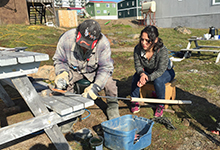
Episode 2: Unaaq (Harpoon) & Sakku (Arrow)
For many years, Inuit made the Unaaq (Harpoon) from animal bones and used dried walrus intestines cut up to make rope. A hunter from Iqaluit, Jerry Ell, goes through the many steps to make a modern harpoon and demonstrates the way he makes an arrow.
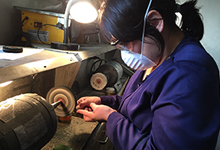
Episode 3: Arts and Crafts
The north is filled with many talented artists and a variety of art. Johnny Qamaniq shows how he makes jewellery earrings. Theresa Ukkalianuk shows how she makes a beaded necklace, and Barbara Akoak demonstrations how she makes earrings out of tulugak (Raven) feet.
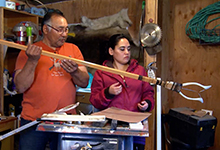
Episode 4: Kakivak
The fish spear, known as the Kakivak would have been made mostly from bone and occasionally driftwood for the long shaft; the point, at times made of rock, but mostly bone. Now a days there is plenty of wood around, and the point could be made from steel, brass or other hard elements. Solomon Awa, a hunter from Iqaluit, originally from Pond Inlet, demonstrates the making of a modern Kakivak.
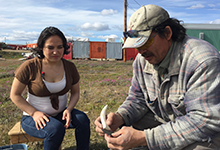
Episode 5: Ulu (traditional women’s knife)
There are so many styles and functions for an ulu. The original purpose of a women’s knife was to cut, chop, shave, and scrape for eating and sewing. Learn how Inuit made an ulu before metal and wood materials were introduced. Jerry Ell makes an ulu used for cutting materials for sewing.
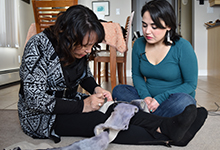
Episode 6: Sealskin Crafts
Sealskin has been used for thousands of years by Inuit mostly to keep you warm in the cold winters. Clothing such as parkas, pants and kamiks were the main items made from sealskin. Today Ryka Atsaniik makes seal flowers, earrings and brooches, and hairpieces. Also, Myna Ishulutak make a sealskin tie for a boy to use.
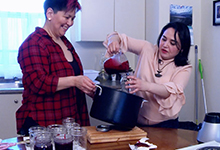
Episode 7: Nuna Inspired
The north is filled in the summer months with a limited supply of edible plants such as berries. In this episode, Rita Stickland will show us how she makes infused Labrador tea cupcakes, and tops it with Paunarq (berry) frosting. Annie Keenainak shows us how to make arctic berry jam.
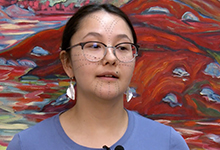
Episode 8: Tunniit
Many Inuit mostly women are taking part in a revival of traditional Inuit tattoos. Traditionally, Inuit women received symbolic designs on their face and arms and sometimes on their legs as an expression of beauty. Stitching would be done with a caribou bone needle and the thread made of sinew from the back of a caribou muscle soaked in natural ink such as soot of a burning traditional seal oil lamp.
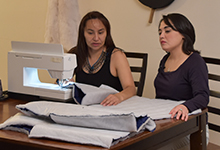
Episode 9: Atigi (Parka)
Parkas were traditional be made from furs of land animals such as caribou and wolf and others, also from sealskin from seals and other marine mammals. These days Parkas can be made from todays’ materials and Mary Lee-Aliyak, originally from Rankin Inlet, living in Iqaluit, demonstrates the process of making a modern parka.
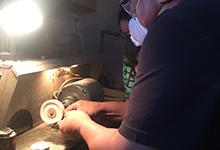
Episode 10: Nanuq (Bear) Inspired
The modern Inuit are using more of the bones and claws of animals to make jewelry and art. In this episode, a renowned artist in jewelry making Mathew Nuginaq, will show how he turns a polar bear claw into an amazing pendant.
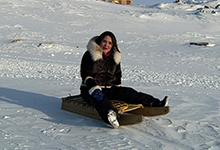
Episode 11: Qamutiq (sled)
For thousands of years Inuit has used the Qamutiq in the north as a means of transportation. Back then, it could have been made from frozen fish and freezing ice under to make it run smooth and fast. Other things such as bone and skins, driftwood and whatever would have been used. Watch Jerry Ell make a Qamutiq in a modern way with ropes, lumber, as well as plastic sheets.
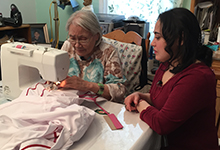
Episode 12: Amauti (Traditional baby carrier)
The Amauti has long been used by Inuit to carry their babies and children. The materials used would be made of animal products such as caribou and sealskin, sometimes birds. These days the modern Amauti is made of fabric and other modern materials such as polyester and wool. Annie Nattaq, an elder from Iqaluit, makes a child’s amauti with a long back.
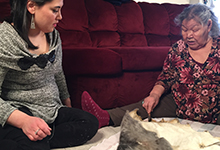
Episode 13: Kamik (traditional sealskin boots)
Kamik making is very tedious and an incredible process. There are so many steps – from cleaning a seal skin, scrapping the fat off, drying it, stretching it, softening it, sizing it, cutting it, chewing it and then sewing it all together. Follow Alicee Joamie, in Iqaluit, as she shows us the steps to make a pair of kamiks.

